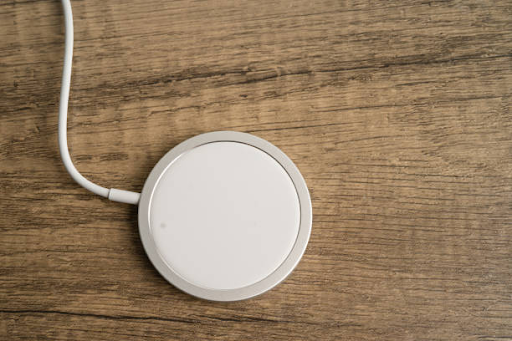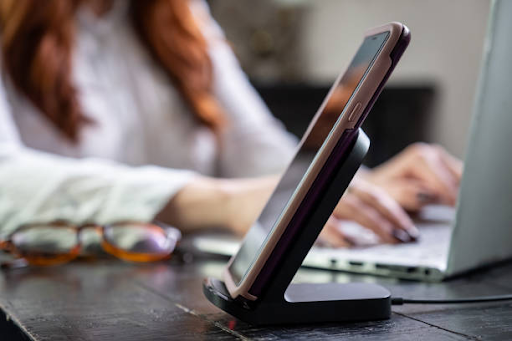In today’s digital age, the need for convenient and efficient device charging has become increasingly important. Wireless charging pads have emerged as a popular solution, providing a hassle-free charging experience for smartphones, tablets, and other compatible devices.
In this sourcing case study, we will delve into the process of acquiring wireless charging pads from China for a foreign client, outlining the key steps and considerations involved in the sourcing journey.

The first step in any successful sourcing project is understanding the client’s specific requirements. In this case, our foreign client sought wireless charging pads that would meet the following criteria:
- Compatibility with a wide range of devices, including smartphones, tablets, and smartwatches.
- Fast and efficient charging capabilities to minimize charging time.
- Sleek and stylish design to complement various settings.
- Robust build quality to ensure durability and longevity.
- Safety features to prevent overheating and overcharging.

2. Supplier Identification and Selection: Finding reliable and reputable suppliers is crucial for a successful sourcing project.
We conducted extensive research and identified several Chinese manufacturers specializing in wireless charging pads. Key factors considered during the supplier selection process included:
- Quality certifications and adherence to international standards such as Qi certification
- Experience and track record in producing wireless charging pads
- Product range and customization capabilities.
- Pricing competitiveness.
- Responsiveness and communication efficiency.
3. Request for Quotations (RFQ): To gather detailed information and compare offerings, we prepared a comprehensive Request for Quotation (RFQ).
The RFQ included specific requirements, such as charging speed, compatibility, design preferences, and target order quantities. This allowed us to evaluate suppliers’ responses and make informed decisions.
4. Sample Evaluation and Testing: To ensure the wireless charging pads met the client’s expectations, we requested product samples from the shortlisted suppliers.
The samples underwent thorough evaluation and testing based on predefined criteria, including:
- Compatibility with various devices and charging efficiency.
- Design aesthetics and build quality.
- Heat dissipation and safety features.
- User-friendliness and ease of use
- Overall performance and reliability.
5. Supplier Negotiation and Contracting: Following the sample evaluation phase, we negotiated with the selected supplier to finalize pricing, terms, and conditions.
Key negotiation points included:
- Unit cost and bulk order discounts.
- Minimum order quantities.
- Packaging requirements and customization options.
- Delivery timelines and shipping arrangements.
- Payment terms and methods.
6. Production Monitoring and Quality Assurance:
Once the contract was in place, we closely monitored the production
process to ensure adherence to quality standards and timely delivery. This involved:
- Regular communication with the supplier to track progress and address any production issues.
- Conducting factory inspections and quality control checks.
- Implementing Pre-Shipment Inspections (PSI) to verify product quality, functionality, and compliance with specifications.
7. Logistics and Shipment Management: Efficient logistics and shipment management played a crucial role in delivering the wireless charging pads to the client.Key considerations included:
- Coordinating with freight forwarders to handle customs clearance and documentation.
- Selecting appropriate transportation methods (air, sea, or land) based on cost, urgency, and order volume.
- Tracking and monitoring shipments to provide real-time updates to the client.
8. Customer Support and Satisfaction: Upon receiving the wireless charging pads, we provided ongoing customer support to address any queries or concerns. We sought feedback from the client to ensure their satisfaction and to continuously improve our sourcing and support services.
Conclusion: Sourcing wireless charging pads from China for our foreign client involved a meticulous process of supplier selection, sample evaluation, contract negotiation, production monitoring, and logistics management.
By understanding the client’s requirements, collaborating with reliable suppliers, and implementing quality control measures, we successfully delivered wireless charging pads that met the client’s expectations in terms of compatibility, performance, and design. This sourcing case study highlights the importance of thorough planning, effective communication, and diligent quality control in sourcing electronic products for international clients.
At Larkser, we strive to deliver exceptional results for our clients by leveraging our expertise in supplier management, quality control, and logistics. Whether it’s a wireless charging pad or any other product, we are committed to providing efficient and effective sourcing solutions, helping businesses access high-quality products from China with confidence.




